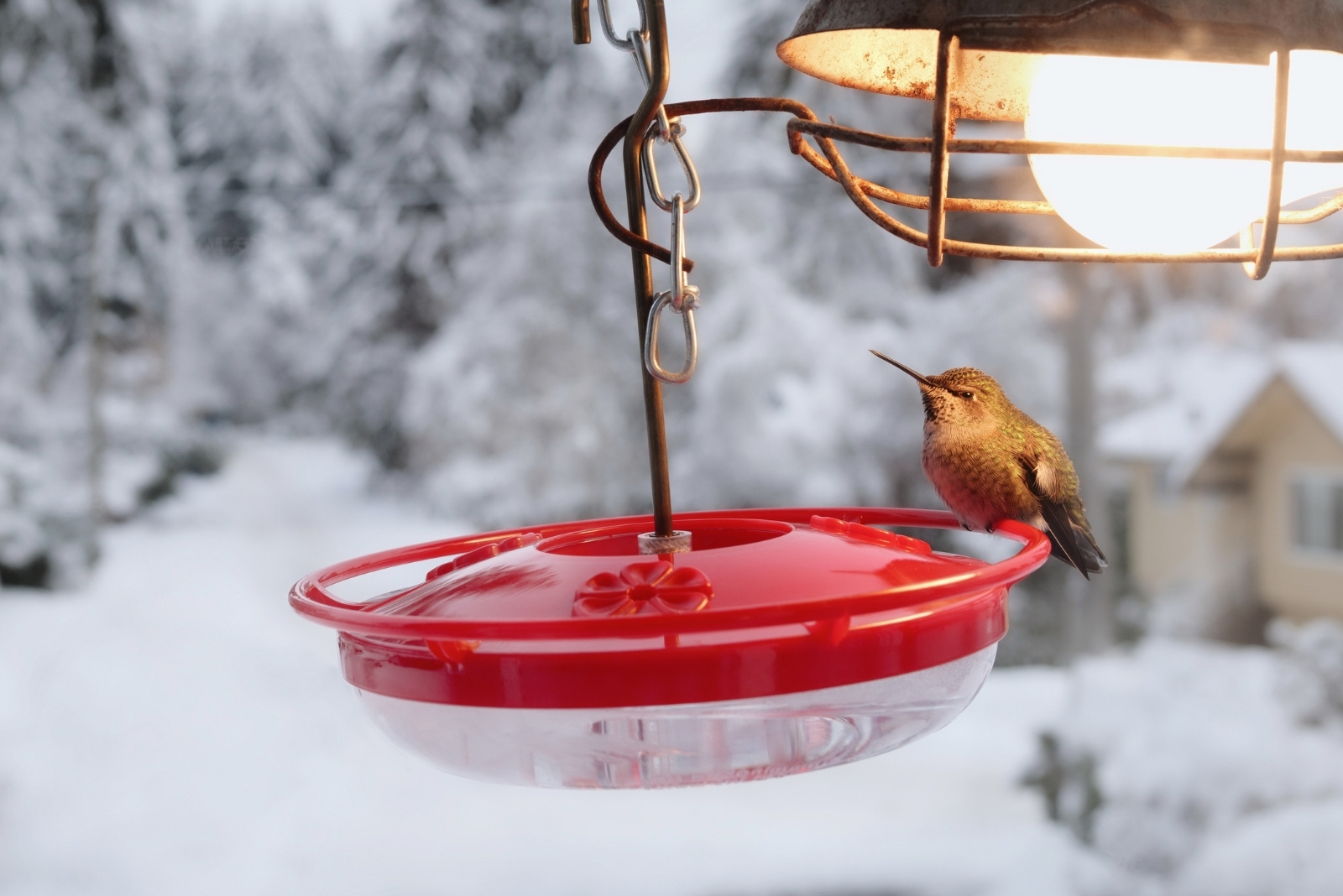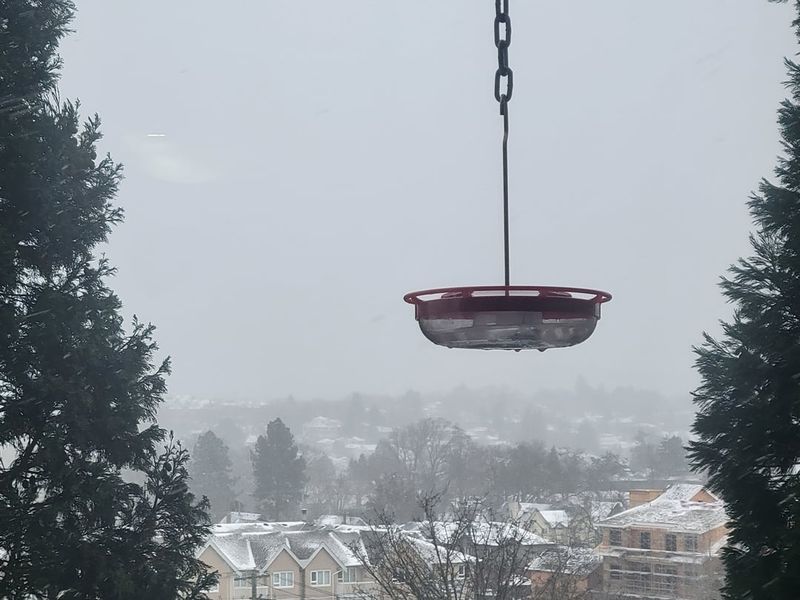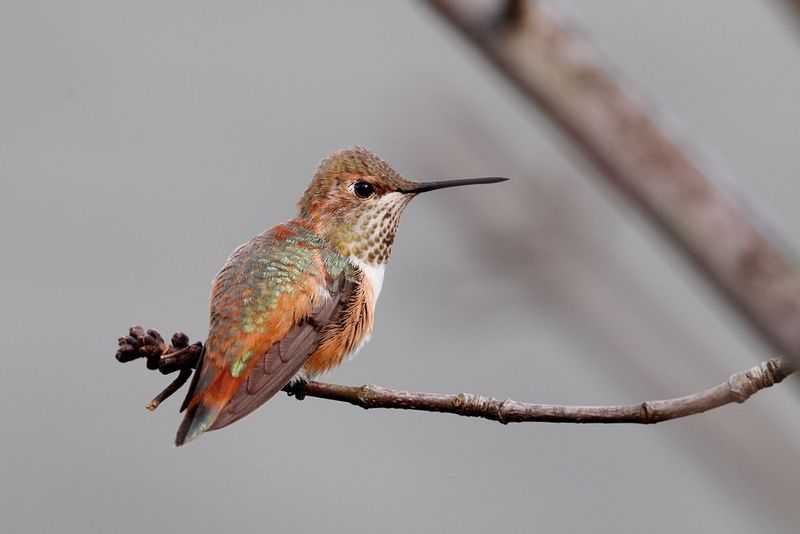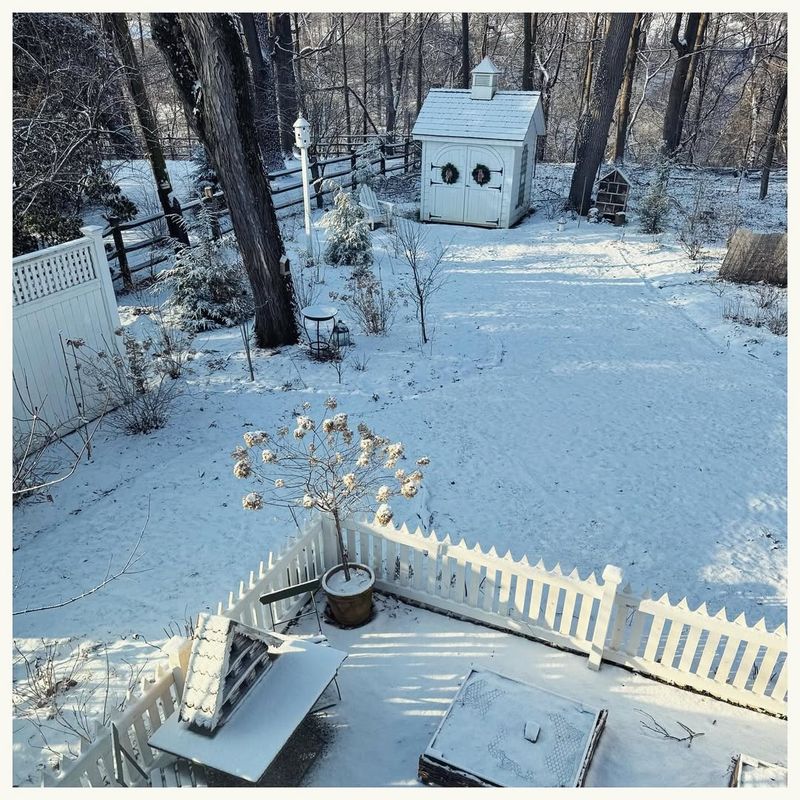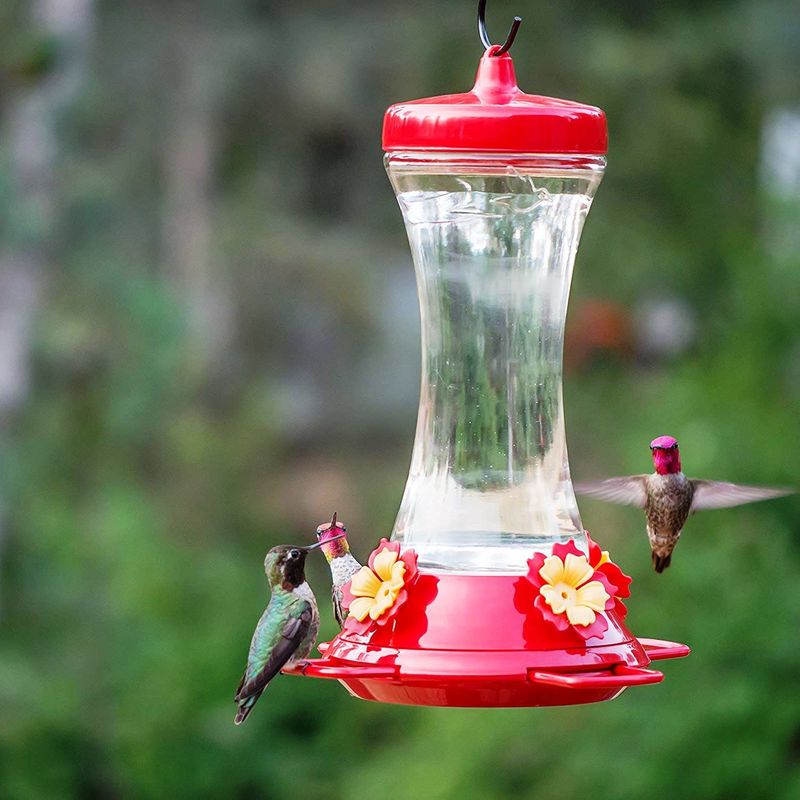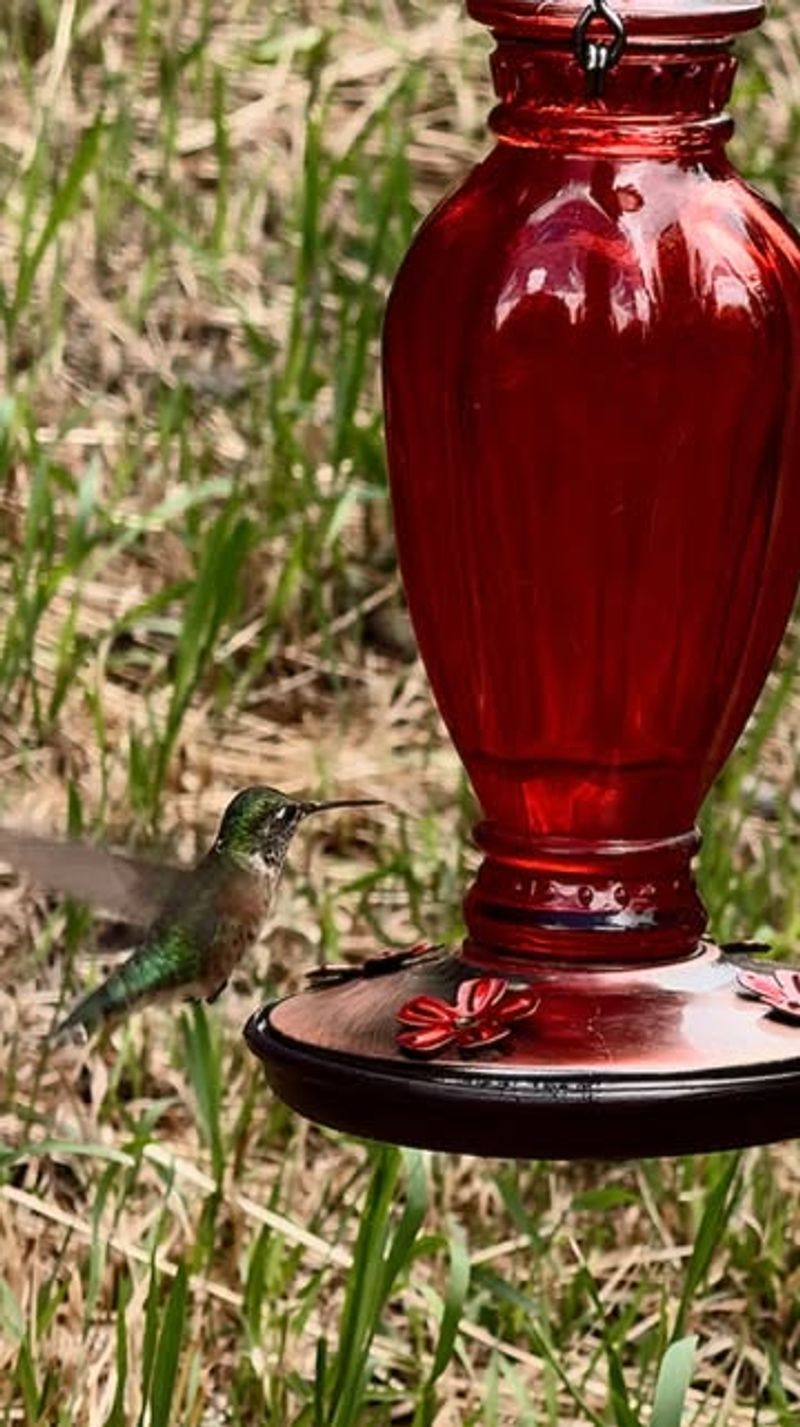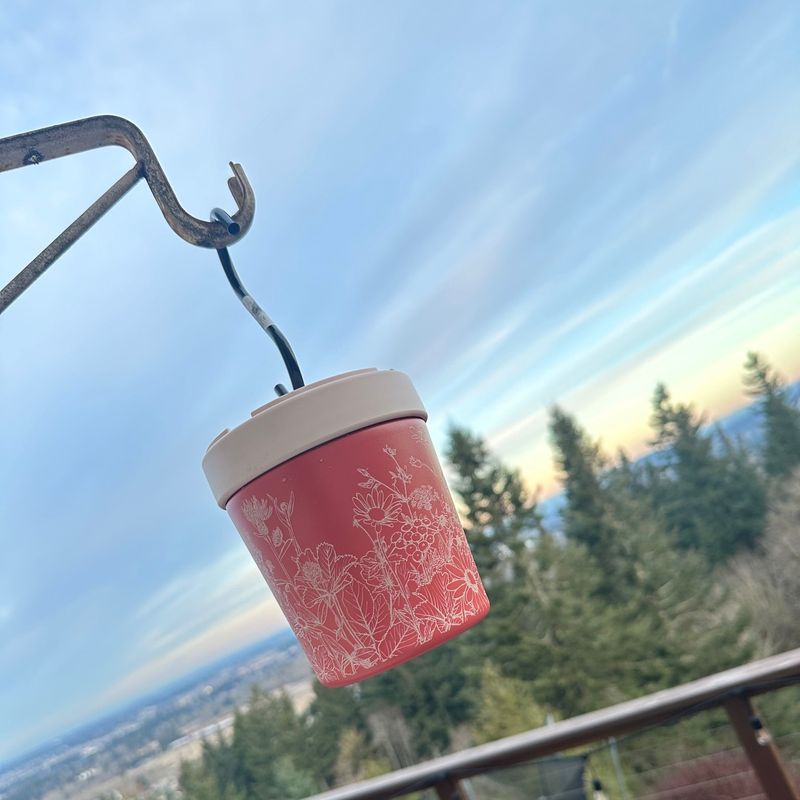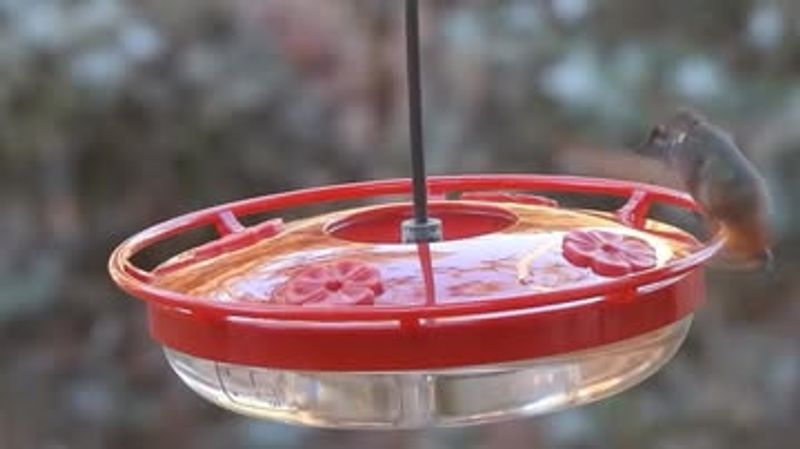New York winters can be tough on tiny hummingbirds, and sometimes they need a little extra help. A heated feeder can keep nectar from freezing and provide a lifeline for these delicate birds.
Paying attention to their behavior helps you know when to step in. Here are eight signs your New York hummingbirds might need a heated feeder.
1. Nighttime Temperatures Drop Below Freezing
When the sun goes down and New York nights turn icy, your nectar feeder can quickly freeze solid. Hummingbirds have incredibly fast metabolisms and need to eat constantly throughout the day to survive.
If temperatures dip below 32 degrees Fahrenheit at night, regular feeders become useless blocks of ice by morning. A heated feeder keeps the liquid flowing, giving early-rising hummers the fuel they desperately need.
Without access to unfrozen nectar, these birds can starve within hours in cold New York weather.
2. You Spot Hummingbirds After September
Most Ruby-throated Hummingbirds leave New York by late September, heading south for warmer climates. However, stragglers occasionally hang around longer than expected, especially during mild autumns.
Spotting one of these tiny fliers in October or November across New York means they’re gambling with survival. Natural food sources like flowers and insects disappear rapidly as fall progresses.
A heated feeder provides critical nutrition for late migrants or lost birds still searching for their winter destinations in warmer regions.
3. Frost Covers Your Garden in the Morning
Walking outside to find everything coated in white frost is beautiful but dangerous for hummingbirds. That sparkling layer means temperatures dropped low enough to freeze moisture overnight.
Your regular feeder probably turned into a sugary popsicle during those cold hours. Hummingbirds visiting New York gardens at dawn need immediate energy after burning calories all night to stay warm.
Heated feeders prevent this freezing problem, ensuring these energetic birds get breakfast right when they need it most each chilly morning.
4. Natural Flowers Have Disappeared
Hummingbirds naturally prefer fresh flower nectar over feeder sugar water any day. But New York’s growing season ends dramatically when cold weather arrives, killing off most blooming plants.
Once your garden flowers have wilted and died, hummingbirds lose their primary food source. Insects also vanish during freezing temperatures, eliminating another important protein source.
A heated feeder becomes the only reliable meal option available, acting as an artificial flower that never dies despite harsh conditions surrounding it.
5. Your Feeder Nectar Turns Slushy
Before nectar completely freezes, it goes through a slushy stage that looks deceptively okay. You might see liquid with ice crystals forming around the edges and feeding ports.
Hummingbirds struggle to drink this partially frozen mixture, and it signals colder temperatures are coming soon to New York. Their tiny tongues can’t penetrate thick, icy slush effectively.
Switching to a heated model prevents this in-between stage entirely, maintaining perfect liquid consistency no matter how cold it gets outside your window.
6. Weather Forecasts Predict Extended Cold Snaps
New York weather can be unpredictable, but meteorologists usually give advance warning about prolonged cold periods. When forecasts show several days or weeks of below-freezing temperatures approaching, it’s time to act.
Regular feeders will freeze repeatedly during extended cold snaps, requiring constant monitoring and refilling. That’s exhausting work and leaves gaps when hummingbirds go hungry.
Installing a heated feeder before the cold arrives ensures uninterrupted service, giving you peace of mind and hummingbirds reliable sustenance throughout brutal conditions.
7. You’re Refilling Feeders Multiple Times Daily
Finding yourself trudging outside repeatedly to replace frozen nectar is a clear sign something needs to change. Regular feeders simply can’t handle New York’s autumn and winter temperature swings.
Each time nectar freezes, you waste sugar water and valuable time. Hummingbirds also miss feeding opportunities between your refill trips, potentially weakening them.
Heated feeders eliminate this frustrating cycle completely, working around the clock without your constant intervention regardless of how cold conditions become overnight or during the day.
8. Rare Species Appear at Your Feeder
Occasionally, western hummingbird species like Rufous or Calliope Hummingbirds wander off course and end up in New York. These lost travelers are far from their normal migration routes and desperately need help.
Bird enthusiasts often report these rare sightings during late fall and winter months. Supporting these confused wanderers through cold New York weather requires reliable food sources.
A heated feeder could literally save the life of a rare visitor, helping them survive until they figure out their southward journey or overwinter successfully.

